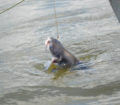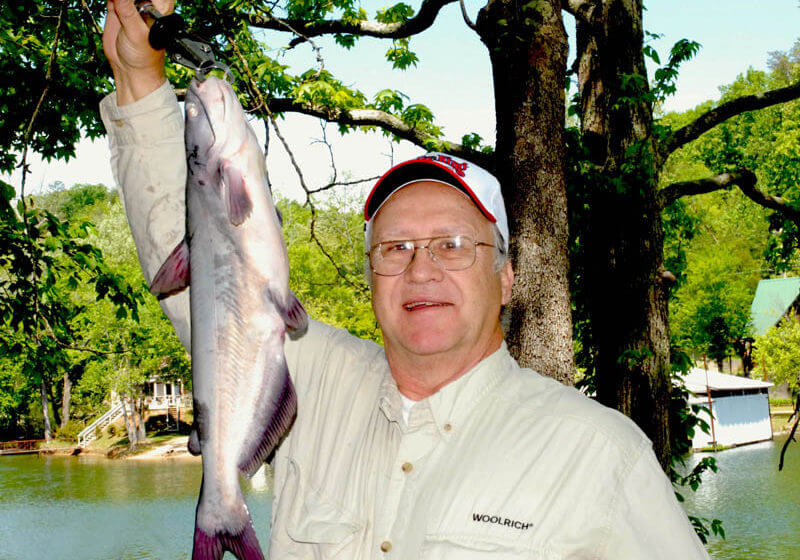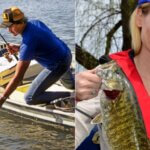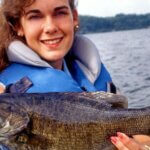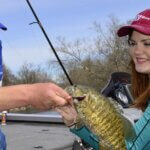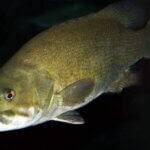Editor’s Note: I like to fish for eaters. As a child, I fished with my father on almost every day off he had. We fished on nearby rivers and lakes, caught a wide variety of fish, cleaned our catch and took them home for my mother to cook for supper. Eating what we caught extended our fishing fun and provided delicious food for our family. Let’s look at some ways to find and catch more catfish and bluegills.
 Although more than 1,000 kinds of catfish are found all over the world, 26 species of catfish live in the United States, ranging in size from 1 inch to the largest said to be a 315-pounder caught in the Missouri River. The North American species have barbels (whiskers) on their faces that enable catfish to find food, since catfish taste through their feelers as well as their entire bodies that have more than 100,000 food sensors on them. A catfish discovers food by fanning the bottom with its barbels and honing in on vibrations – catfish can detect high frequencies at 13,000 cycles per second – and following food scents.
Although more than 1,000 kinds of catfish are found all over the world, 26 species of catfish live in the United States, ranging in size from 1 inch to the largest said to be a 315-pounder caught in the Missouri River. The North American species have barbels (whiskers) on their faces that enable catfish to find food, since catfish taste through their feelers as well as their entire bodies that have more than 100,000 food sensors on them. A catfish discovers food by fanning the bottom with its barbels and honing in on vibrations – catfish can detect high frequencies at 13,000 cycles per second – and following food scents.
You often will discover more catfish than you can catch and eat close to home in small streams. If you look at a road map of your county, you’ll see numbers of small, blue lines that cross highways and county roads. These blue lines indicate small streams. Many, if not most of these small streams, will home catfish. Catfish, like bass will feed in the current, but catfish generally prefer to hold out of the current. As you walk, paddle or wade these small streams, look for:
* Boulders that break the current;
* Downed logs or trees that break the current;
* Points that jut out into the current; and
* Any other type of structure that blocks the current and creates a calm-water area right behind the current.
If I cast up-current with light spinning tackle, allow my bait to run downstream with the current and wash into the eddy area, I often can catch cats.
As youngsters, my now-adult children fished with me in a small stream called the Locust Fork — a tributary of Alabama’s Warrior River. We’d camp on the bank and walk down the bank, until we located a spot where a huge boulder broke the current about 10 or 15 yards from the bank. Each time we went to that place, we caught 10 to 20 channel catfish that weighed from 1/2- to 2-1/2-pounds each.
 While I attended college at the University of West Alabama in Livingston, Alabama, I fished a small stream less than one mile from campus known as the Sucarnoochee River. When I had spare time between classes, I fished behind a small point that jutted out into this little stream with live worms that I’d dug up near a stockyard in town. I caught two to five catfish almost every time I fished in this little river – even if I only fished for an hour.
While I attended college at the University of West Alabama in Livingston, Alabama, I fished a small stream less than one mile from campus known as the Sucarnoochee River. When I had spare time between classes, I fished behind a small point that jutted out into this little stream with live worms that I’d dug up near a stockyard in town. I caught two to five catfish almost every time I fished in this little river – even if I only fished for an hour.
Catfishing doesn’t have to become a big ordeal. You don’t need a boat, and you don’t have to drive a long way from home. When you find small streams close to your home, you can go cat-fishing more often and catch more cats.
 To learn more about catching catfish, check out John E. Phillips’ book, “Catfish Like a Pro,” available in Kindle and paperback, at http://amzn.to/W900eu. You can also get a free eBook copy of “The Catfish Catcher’s Cookbook” at https://johninthewild.com/free-books.
To learn more about catching catfish, check out John E. Phillips’ book, “Catfish Like a Pro,” available in Kindle and paperback, at http://amzn.to/W900eu. You can also get a free eBook copy of “The Catfish Catcher’s Cookbook” at https://johninthewild.com/free-books.

